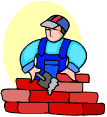
Building Productive Committees

"If computers get too powerful, we can organize them into committees.
That'll do them in."
Author Unknown
If Columbus had an advisory committee, he would probably still be at the dock. Arthur Goldberg
Serving on a committee at work, or in your volunteer life, can be the source of great satisfaction or a futile exercise in frustration. Let's face it, committees are often regarded as time-consuming, conflict-ridden impediments for achieving the work of an organization. With diminishing resources and increasing work loads, non-profit organizations are becoming increasingly dependant upon committees to perform essential operational tasks. Therefore, understanding how to build productive committees that will advance the organizational mission as well as provide a positive, satisfying experience for committee participants is critical.
Committees are often derailed from the outset due to a lack of understanding as to their role. Simply put, the function of a committee is to assist the Board and staff with the work of the organization. Committees make recommendations to the Board for discussion and vote. The role of the Board is to:
- determine the committees required to support the work of the organization;
- approve a detailed terms of reference for each committee;
- provide the necessary resources and support for the committee;
- receive and respond to committee reports.
Non-profit organizations can no longer survive on good intentions alone. Performance and results matter! In the upcoming years, organizations must develop and demonstrate a capacity for change which focuses on agility, flexibility and speed. High performance organizations must have the capability to execute on opportunities. Ad-hoc committees which can be pulled together quickly and assigned specific mandates to be accomplished within limited time frames fit this bill. Committee survival techniques which will help your Laubach organization meet the challenges and opportunities headed your way include:
- Ensure all committees have clearly defined tasks and terms of reference.
- Ensure all participants have a clear understanding of the committee mandate.
- Provide appropriate guidance, training, and education for committee participants.
- • Establish realistic time lines.
- Assign a Board member as liaison to the committee, who will act as both advisor and advocate.
- Capitalize on committee members' experience and areas of expertise.
- Assign a committee chair who has the time, skills, and commitment to pursue the task.
- Likewise, give considerable thought to who should sit on the committee. Look for people with the necessary skills who are willing to expend the necessary time to accomplish the task.
- Provide staff support to the committee.
- Clearly define the parameters for decision-making and authority.
- Create a system of checks and balances to monitor the work of committees and committee members.
- Ensure adequate resources are assigned to accomplish the task.
The Committee Worksheet/Terms of Reference (attached) incorporates many of these strategies for your convenience. Effective utilization of committees will allow the organization to:
- deploy people and allocate resources specifically where they will significantly impact and advance the organizational mission; (Peter Drucker)
- disperse the tasks of leadership;
- groom successors for positions of organizational leadership.
Building productive committees will allow your organization to meet challenges head on and pursue opportunities in a timely and organized manner so as not to leave the next Columbus idling at the dock.
For those interested in additional
resources and information on Building Productive Committees, an excellent
article is available on the Internet entitled "26
Steps to Improving Committee Functioning"
by Terrie Temkin, PhD
(April 2003) at: http://charitychannel.com/article_3490.shtml